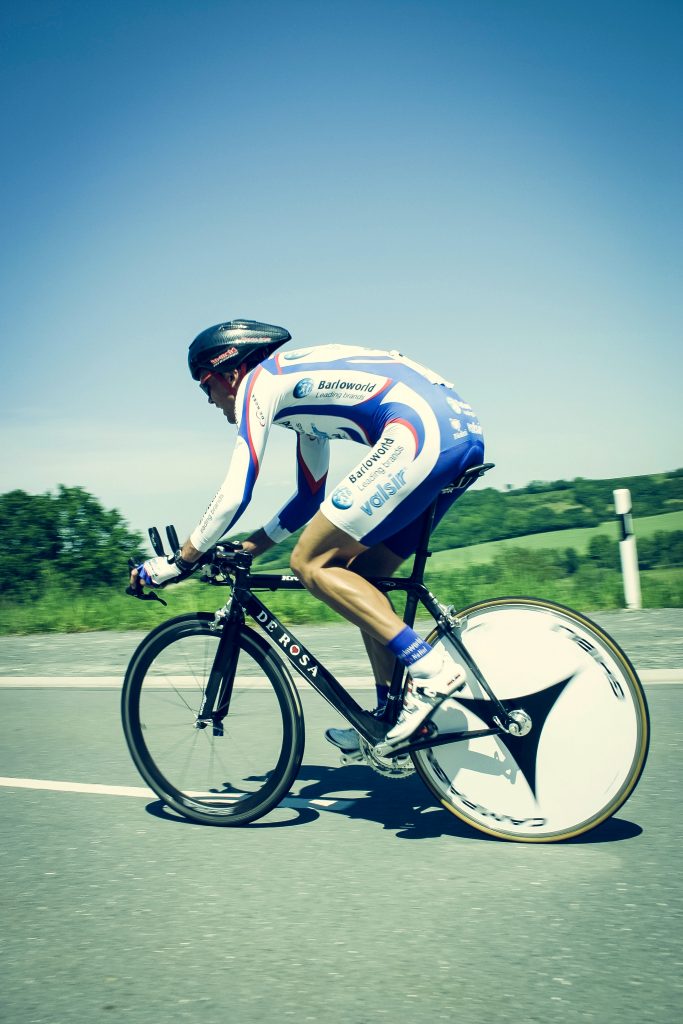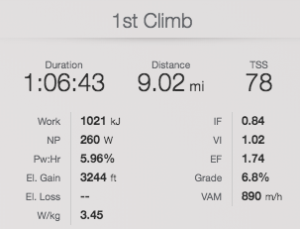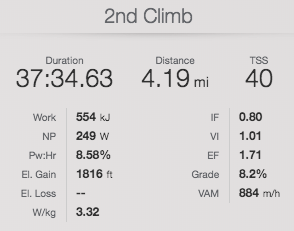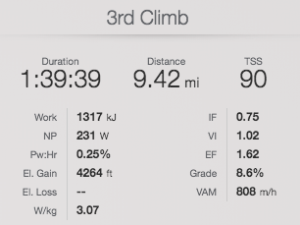
As we watch the riders in the Tour de France fly by on our screens it’s only natural to wonder what it feels like to be there as an athlete. Most of us will never know the feeling of tackling stage after stage of one of the toughest and most revered endurance endeavors in the world. While I’ve never ridden the Tour route myself, I have had the pleasure of helping other athletes accomplish this amazing feat. I reached out to athletes Andy Hildreth and Chris Orrell, who both completed the 2018 Tour de France route together, to help us mere mortals gain a better understanding of what this course really means to the athletes that take it on. We’ll also take a look at some of the key metrics and data from these rides to gain both the qualitative and quantitative perspective.
Questions for the Athletes
What was your motivation to ride the Tour route?
- Andy – “I had always been fascinated with the Tour from a young age which stemmed from my father’s interest in the sport. I read a book by an amateur club rider who had cycled the Tour route one year with his father and brother in support and then started to think about it myself. I had said to Chris jokingly that I would ride the Cape Epic if he rode the Tour route with me, this prompted some further research and the rest is history!
- Chris – “Having completed the Cape Epic we were looking for another significant challenge. Completing the entire Tour de France seemed like a suitable extension of my endurance ambitions.”
What were your goals?
- Andy – “To complete the whole route in good time, minimizing the time in the saddle by balancing both the effort and speed required to ensure sufficient recovery at the end of each day.”
- Chris – “The goal was primarily to complete the entire Tour, but more than that, it was too ‘ride’ it as opposed to just suffering and enduring it. It was decided between myself and my coach that achieving an FTP of 4 W/kg was a key metric in achieving this goal.”
Was the race/ride what you expected?
- Andy – “No, but that was really driven by my decision to race with the fast group which meant with your head was down concentrating the whole time. If I was to do it again then I would ride it alone or in a pair at a much more leisurely pace.”
- Chris – “So much more than what was expected. The dedication to a single aim across the year of training and the event itself was a great personal education in mental strength and physical stamina. Riding through France by completing the Tour, summiting iconic cols, is a spectacular and locally respected way to see one of the most amazing countries. And to have completed it, riding with the front of the pack was an ambition well achieved.”
What was your nutritional plan, pre, during and post-ride?
- Andy – “Pre-ride was eating a substantial breakfast, most can’t eat a lot early morning but I’ve never had an issue. I rode with 2x950ml bottles of electrolyte mix (half serving) combined with extra sodium which gave me 2 hours on the bike. That worked well between planned feed stops. I carried an additional 4-7 hours worth of calories on me depending on the stage. Post-ride included a recovery drink and 30min massage then early dinner and bed.”
- Chris – ” Liquid nutrition on the bike was about 50% of total intake, with the other 50% coming in the form of solid food at the scheduled stops. Sodium intake (c. 700mg per hour) and water volume was a key metric considered and delivered primarily through electrolyte mix in every bottle. Off the bike, other than a good breakfast, the focus was on eating something significant immediately on completing the ride and then eating a healthy dinner relatively early to allow early nights for recovery.”
- Coach Taylor – “Significant consideration was given to nutrition planning. Key training sessions were used to train the GI system and to take note of what worked and what didn’t. Hydration needs, sweat rate, and calorie consumption were factored in for each individual. A nutrition plan was crafted and refined throughout the training plan such that there were no unanswered questions when it came time to execute.”
What did your training look like for this ride?
- Andy – “Living in Abu Dhabi (largely flat and hot) meant the majority of the training was done indoors on a turbo trainer connected to Zwift following a 6-day a week training plan by my coach communicated through Training Peaks. Towards the end of the training, I ventured outdoors during the hours between sunset and sunrise to train on the only mountain in the Emirate.”
- Chris – “100% dedication to Thomas Endurance Coaching. So accommodative but very tough at times!!”
- Coach Taylor – “Due to the nature and magnitude of an event like this we began training very far in advance. We used a fairly traditional periodization model with a big emphasis on foundational muscular and aerobic strength in the early Base Period. We then moved through several progressive Build Periods where we slowly added volume and TSS. 16 weeks out from the start was when specificity was the highest and training and timing of every workout was tailored to the individual.”
Data Breakdown
One of the most anticipated stages of the 2018 Tour was Stage 17. While it was the shortest non-time trial stage, it was nearly all uphill. Racers and spectators alike were looking forward to what this type of challenge would look and feel like during the third and final week of racing. Let’s take a closer look at what it took for Andy and Chris to deliver on this day after nearly 2,000 miles of riding.
Watts per Kilogram
Knowing that the fabled climbs of the Tour where ahead, one of the primary goals of both athlete’s training was to reach an FTP of at least 4 W/Kg. From this goal, a substantial amount of time was spent working on climbing efficiently at or above 3 W/Kg. When the terrain turns upwards W/Kg is one of the primary metrics to focus on. If we dissect the three primary climbs of this stage we can see that their training paid off tremendously as they found the strength to push higher and higher. 3 W/Kg was achieved even on the final and most demanding Col du Portet.



Kilojoules (Kj)
Stages like this one, while shorter than most, require a tremendous amount of work. Special care was taken in the closing weeks of training to prepare both Chris and Andrew’s body to handle this level of workload. The amount of work that’s produced on the bike allows us to understand exactly what the caloric (Kcal) needs are for a given day. The simple formula 100 Kcal = 418 KJ is what we used to better prepare for these days in training and recovery during the event. We can see the energy expended as well as the power profile of this stage in the chart below.

Elevation Gain
If we look to the “golden rule” of climbing it’s generally agreed upon that 1,000 feet per every 10 miles are what classifies a more climbing centric route. If we adhere to that rule then we see that Stage 17 blew that rule out of the water. With over 10,000 feet of vertical gain in only 51 miles, this was a brutal day in the mountains by anyone’s standards. Another metric useful for quantifying climbing efficiency is VAM. Aiming for around 1,000 VAM is a great goal for days when it always seems to go vertical. The first climb of the stage shows an excellent control of both W/Kg as well as VAM.

To take on a route like the Tour as a professional, or an amateur is no small feat. The preparation needed to ready the body, along with the sheer physicality of the event itself, is what makes it the experience reserved for only a few. Whether you’re watching the pros remotely or thinking of tackling some or all of the route, it is not to be taken lightly. This is what makes the Tour de France one of the best events the world of endurance sports has ever known.



